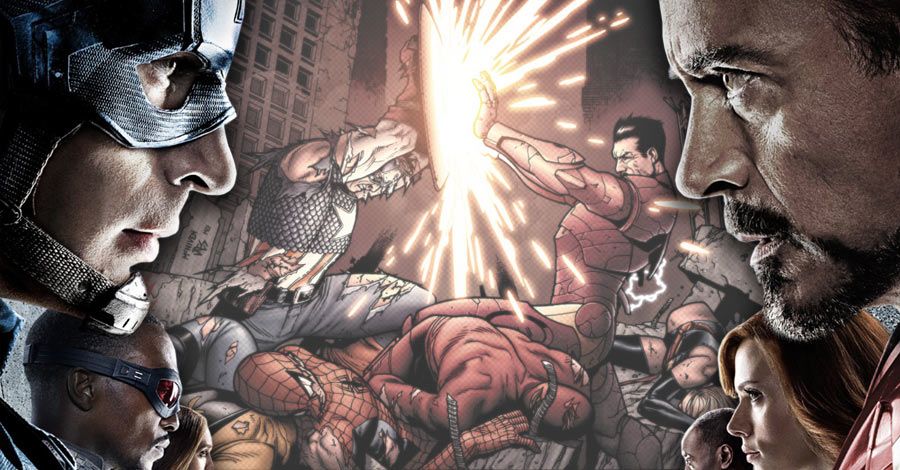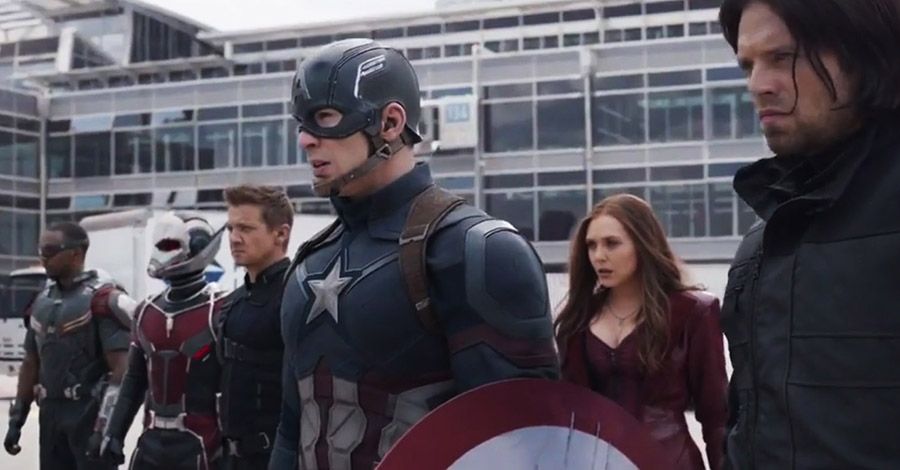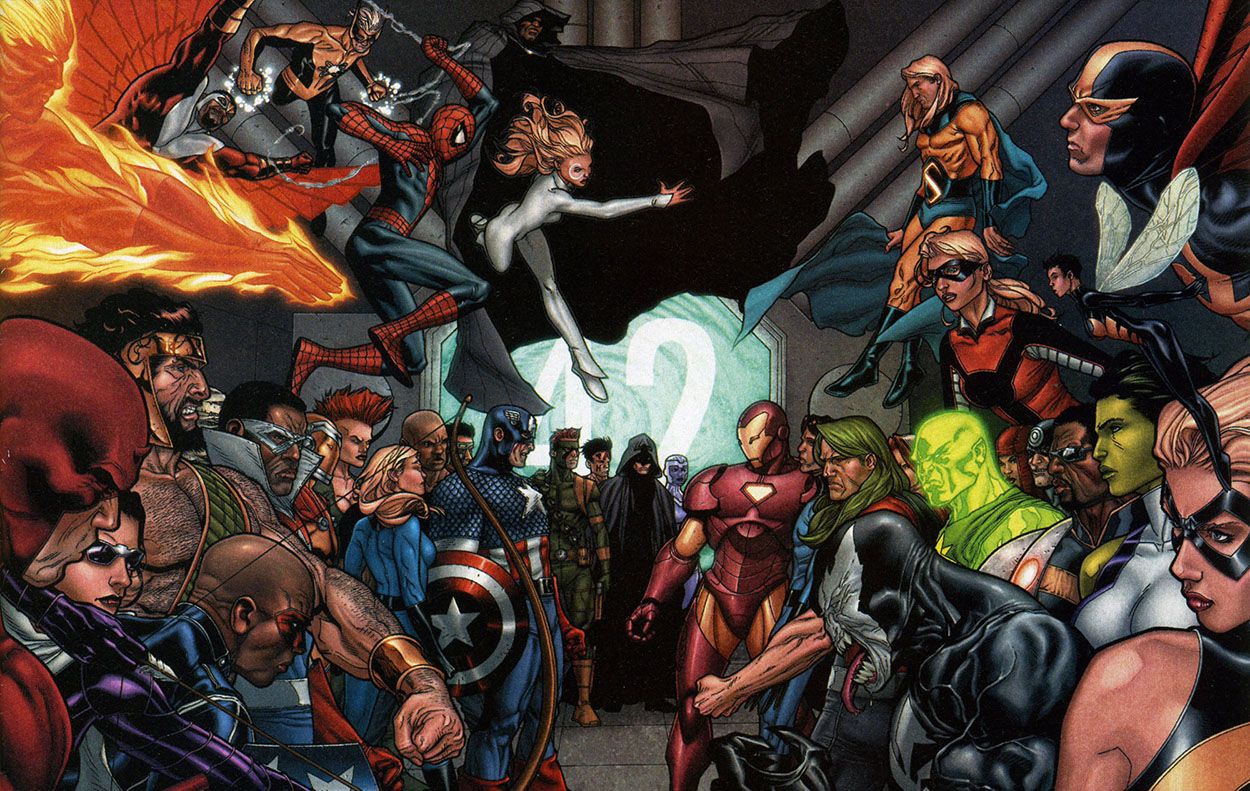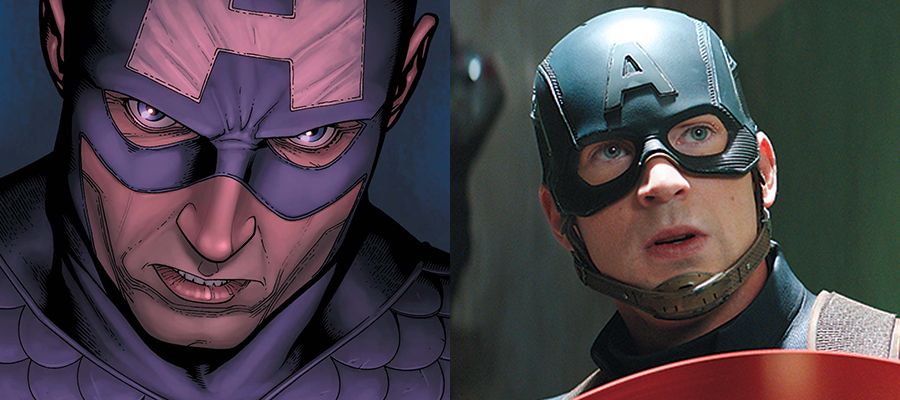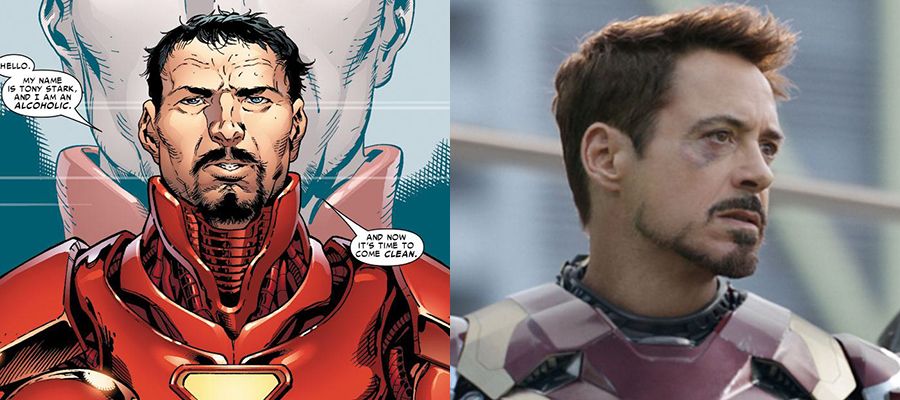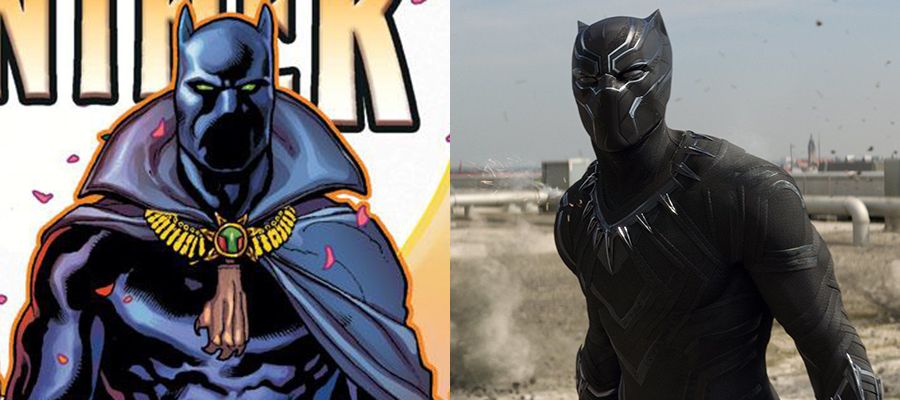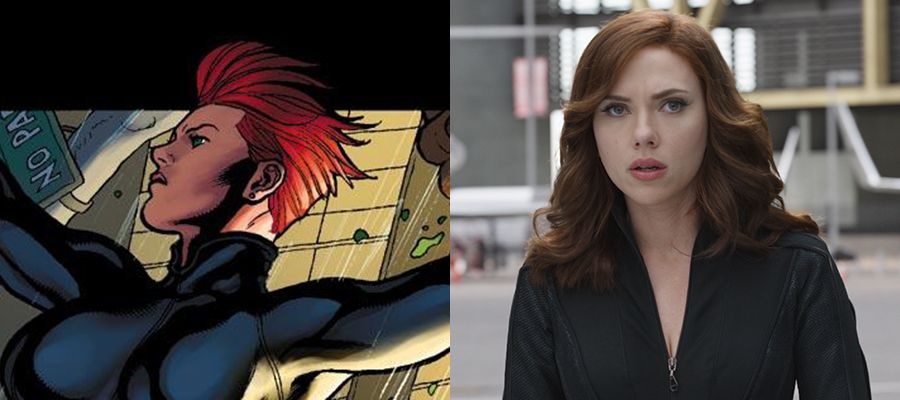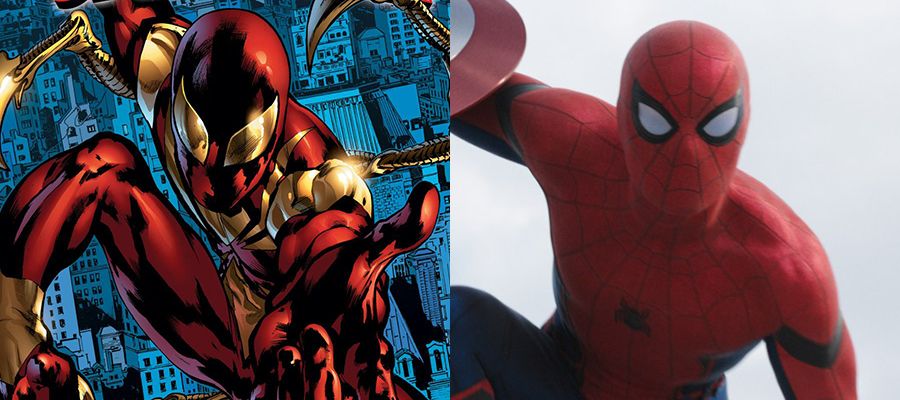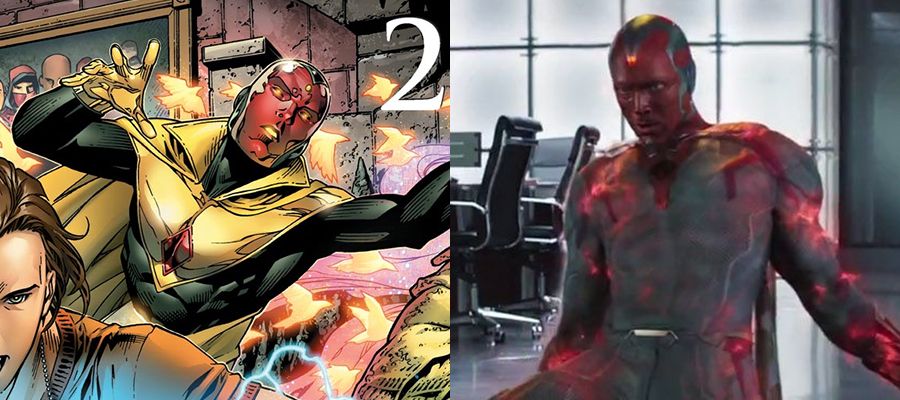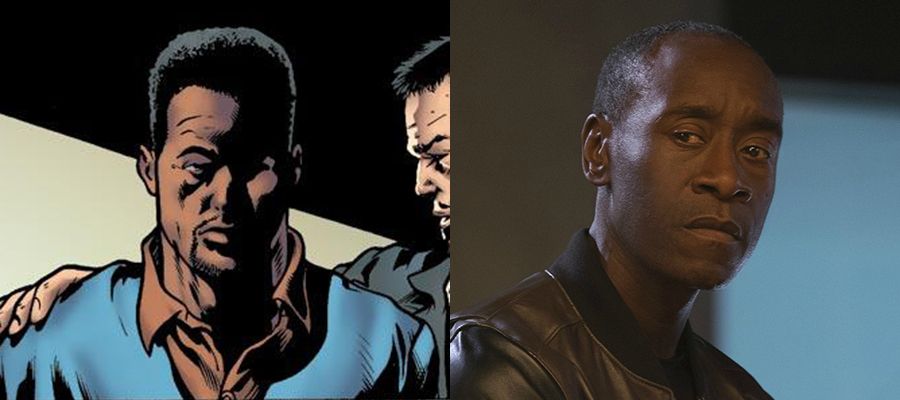The drums of war are pounding louder. As "Captain America: Civil War's" release date approaches, new photos, clips and reviews have grabbed fans' attention. Even Pizza Hut is calling for Marvel loyalists to chose between #TeamCap and #TeamIronMan!
With "Civil War's" release date now under a month away, we've taken the time to compile a rundown of how 2016's Marvel movie compares to the 2006 Marvel comic book series it shares a name with on a character-by-character basis. We already know that while both stories involve the implementation of government oversight for superheroes, the similarities really end there; even the original idea for the film wasn't "Civil War." So, who originally sided with who? What role did the movie's stars play in original story? Here are our findings -- what similarities and differences can you spot?
PRO-REGISTRATION
FILM: Iron Man, Black Panther, Black Widow, Spider-Man, War Machine, Vision
COMIC: Iron Man, Black Widow, Agent 13, Bishop, Blade, Deadpool, Dum Dum Dugan, Gabe Jones, Hank Pym, Hellcat, Maria Hill, Mister Fantastic, Ms. Marvel, She-Hulk, Stature, the Thunderbolts, Tigra, Wasp, Wonder Man
ANTI-REGISTRATION
FILM: Captain America, Agent 13, Ant-Man, Falcon, Hawkeye, Scarlet Witch, Winter Soldier
COMIC: Captain America, Falcon, Winter Soldier, Black Panther, Cloak, Colossus, Cyclops, Dagger, Daredevil, Goliath, Ghost Rider, Havok, Hercules, Human Torch, Invisible Woman, Iron Fist, Jessica Jones, Justice, Luke Cage, Magneto, Monica Rambeau, Nick Fury, Punisher, Quicksilver, Spider-Man, Storm, Wolverine
The film's #TeamCap and #TeamIronMan may look a little light when compared to the Marvel comics. However, you have to consider that the "Civil War" comic came after almost 50 years of continuity and had a much larger pool of characters to pull from; "Captain America: Civil War" comes only eight years into the Marvel Cinematic Universe and a lot of the missing characters either don't have MCU counterparts yet or Marvel Studios doesn't have their film rights.
TEAM CAPTAIN AMERICA
TEAM IRON MAN
Iron Man: While Tony Stark initially opposed the Superhuman Registration Act, he quickly came around and became its leading proponent. He thought registration would bring superheroes and civilians together -- and he thought it would be better to get behind the movement now than be forced into it later. Complying with the law, Stark revealed himself publicly as Iron Man. In his final battle with Captain America, Steve Rogers surrendered to Tony rather than allow the war to cause more damage. The "Civil War" series concluded with Stark being named Director of S.H.I.E.L.D.
Black Panther: T'Challa was understandably distracted at the start of the superhero "Civil War," as the beginning of the event coincided with his marriage to the X-Man Storm. In fact, Black Panther had to physically prevent Iron Man and Captain America from fighting it out at his wedding. As the war was mostly contained to the United States, the newlyweds remained neutral -- until they paid the White House a visit and the government tried to force Storm, a United States citizen, to register. This led to Black Panther and Storm siding with Captain America's anti-registration Avengers.
Black Widow: Natasha Romanoff's allegiance in the superhero civil war didn't become known until after the dust had settled and Captain America was arrested. While Black Widow pretty much sat the conflict out, Tony Stark and Carol Danvers quickly recruited her into a new pro-registration lineup of Avengers. Black Widow stuck with the team for a few missions, until the next major event -- "Secret Invasion" -- shook things up for the Marvel Universe.
Spider-Man: "Civil War" had a major impact on Peter Parker's life; with the support of Aunt May and Mary Jane, Peter agreed to side with Iron Man and unmask publicly, revealing to the world his secret identity. Peter, May and MJ all moved into Avengers Tower and Spider-Man got an upgraded "Iron Spider" suit from Tony Stark. But a series of events (Stark's murderous Thor clone, the reveal of a secret, extradimensional prison for unregistered heroes) upset Spider-Man's conscience and caused him to switch sides halfway through; Peter rejected the Iron Spider suit and stood with Cap through to the end of the war.
Vision: Just like Ant-Man and Hawkeye, Vision also met his end as part of "Avengers Disassembled" and was absent for "Civil War." But just because Vision was dead doesn't mean there wasn't a Vision involved in the event. A second Vision, comprised of a sentient suit of armor from the future paired with the brain patterns of the original Vision and a time traveler, stood alongside Cap's anti-registration forces. This Vision played a crucial role in the final battle, using his abilities to disable Iron Man's armor.
War Machine: When the superhero civil war broke out, James Rhodes was assigned to the Sentinel Squad O*N*E, a government-sponsored group of pilots that controlled Sentinel robots designed to "protect" mutants. As one of Tony's oldest friends, Rhodey set out to arrest Black Panther and Storm for not complying with the registration act. But when he confronted the pair, he experienced a crisis of conscience and relented, even going so far as to convince Stark to let the two go. After "Civil War," Rhodey signed up for the Initiative program and began training young and newly registered heroes.
Marvel's "Captain America: Civil War" opens on May 6, 2016.

